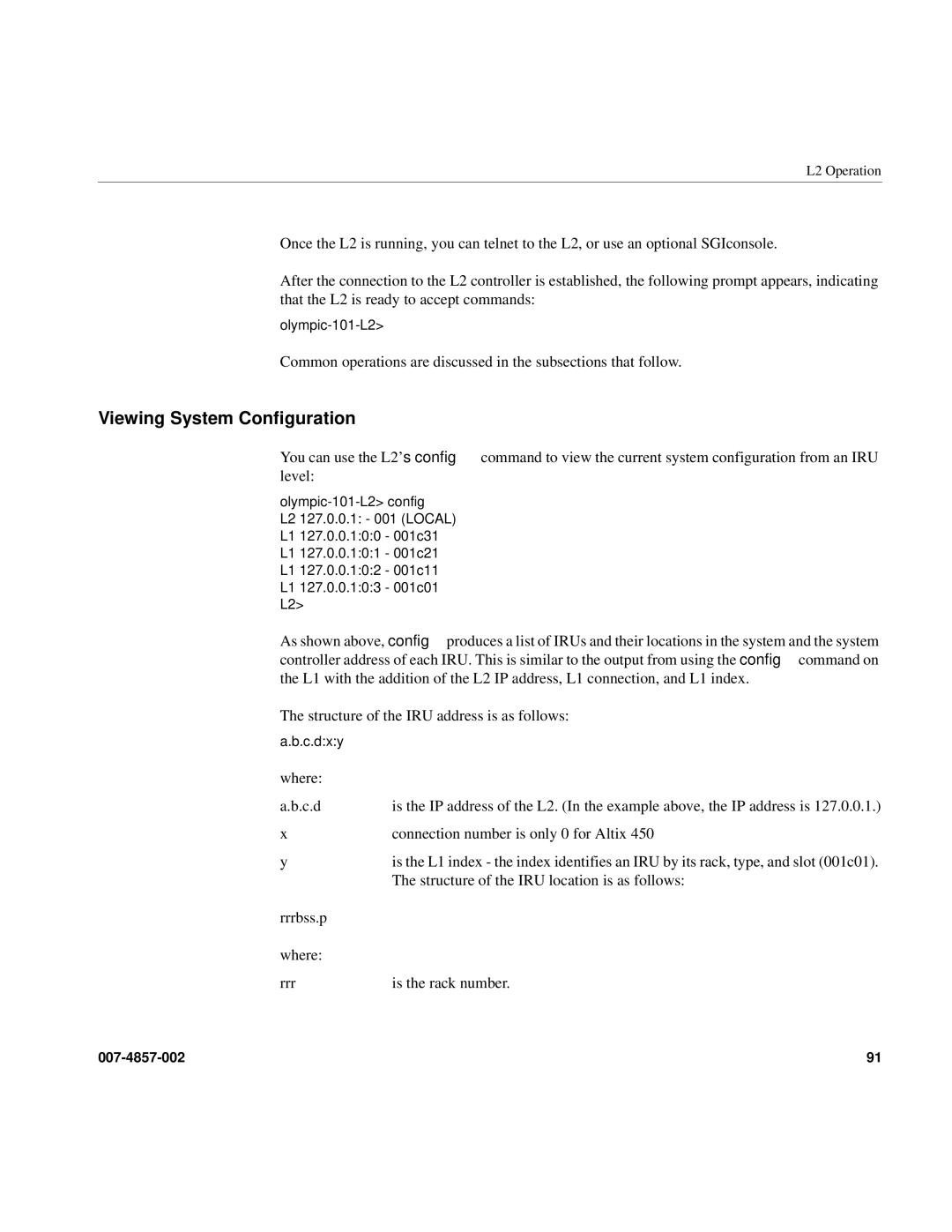L2 Operation
Once the L2 is running, you can telnet to the L2, or use an optional SGIconsole.
After the connection to the L2 controller is established, the following prompt appears, indicating that the L2 is ready to accept commands:
Common operations are discussed in the subsections that follow.
Viewing System Configuration
You can use the L2’s config command to view the current system configuration from an IRU level:
L2 | 127.0.0.1: - 001 (LOCAL) | |
L1 | 127.0.0.1:0:0 - 001c31 | |
L1 | 127.0.0.1:0:1 - 001c21 | |
L1 | 127.0.0.1:0:2 - | 001c11 |
L1 | 127.0.0.1:0:3 - | 001c01 |
L2>
As shown above, config produces a list of IRUs and their locations in the system and the system controller address of each IRU. This is similar to the output from using the config command on the L1 with the addition of the L2 IP address, L1 connection, and L1 index.
The structure of the IRU address is as follows:
a.b.c.d:x:y |
|
where: |
|
a.b.c.d | is the IP address of the L2. (In the example above, the IP address is 127.0.0.1.) |
x | connection number is only 0 for Altix 450 |
y | is the L1 index - the index identifies an IRU by its rack, type, and slot (001c01). |
| The structure of the IRU location is as follows: |
rrrbss.p |
|
where: |
|
rrr | is the rack number. |
91 |
